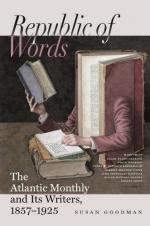Among the finest specimens of timberwork in America are the Cascade Bridge upon the New York and Erie Railroad, designed and built by Mr. Adams, consisting of one immense timber-arch, having natural abutments in the rocky shores of the creek;—the second edition of the bridges generally upon the same road, by Mr. McCallum, which replaced those originally built during the construction of the road, —these hardly needing to be taken down by other exertion than their own;—the bridges from one end to the other of the Pennsylvania Central Road, by Mr. Haupt;—the Baltimore and Ohio “arch-brace” bridges, by Mr. Latrobe;—and the Genessee “high bridge,” (not a bridge, by the way, but a trestle,) near Portageville, by Mr. Seymour, which is eight hundred feet long, and carries the road two hundred and thirty feet above the river, having wooden trestles (post and brickwork) one hundred and ninety feet high, seventy-five feet wide at base, and twenty-five feet at top, and carrying above all a bridge fourteen feet high; containing the timber of two hundred and fifty acres of land, and sixty tons of iron bolts, costing only $140,000, and built in the short time of eighteen months. This structure, if replaced by an earth embankment, would cost half a million of dollars, and could not be built in less than five years by the ordinary mode of proceeding.[2]
Further, the interest, for so long a time, on the large amount of money required to build the embankment, at the high rate of railroad interest, would nearly, if not quite, suffice to build the wooden structure.
Again, our wooden bridges of the average span cost about thirty-five dollars per lineal foot. Let us compare this with the cost of iron bridges, on the English tubular plan, the spans being the same, and the piers, therefore, left out of the comparison.
Suppose that a road has in all one mile in length of bridges. Making due allowance for the difference in value of labor in England and America, the cost per lineal foot of the iron tubular bridges could not be less (for the average span of 150 feet) than three hundred dollars.
5280 feet by $35 is $184,800.00 5280 feet by 300 is $1,584,000.00 The six per cent. interest on the first is $11,088.00 The six per cent. interest on the second is $95,040.00 And the difference is $83,952.00
or nearly enough to rebuild the wooden bridges once in two years; and ten years is the shortest time that a good wooden bridge should last.
The reader may wonder why such structures as the bridge over the Susquehanna at Columbia, which consists of twenty-nine arches, each two hundred feet span, the whole water-way being a mile long, and many other bridges spanning large rivers, and having an imposing appearance, are not referred to in this place. The reason is this: large bridges are by no means always great bridges; nor do they require, as some seem to think, skill proportioned




